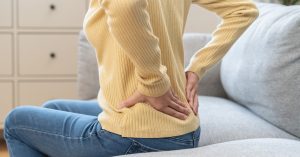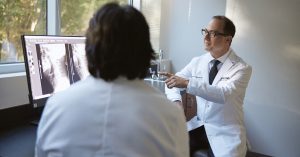Acupuncture in Alberta 2024 – The BMAS Blog

Inspired by Lu et al 2024.[1]
ABCHIP – Alberta Complementary Health Integration Project
BPI – brief pain inventory
PSQI – Pittsburgh sleep quality index
PHQ9 – patient health questionnaire 9
PROMIS – patient-reported outcomes measurement information system [2]
SF – short form
EQ-5D-5L – EuroQol Group 5D-5L instrument [3]
NRS – numerical rating scale
QoL – quality of life– key to acronyms
This paper caught my eye because it describes real world data (n=606) as part of a government funded project () in Alberta, Canada.
The project was set up in the wake of the COVID-19 pandemic and it provided free acupuncture to address pain, mental health, and addiction issues for the youth and elderly in Alberta. Patients needed to be either 24 and below, or 55 and above.
The inclusion criteria were quite broad, and outcomes were measured before and after a course of treatment. Most patients received 12 sessions over 3 months, but more complex cases could receive up to 18 sessions.
Outcomes included:
- Pain – BPI
- Sleep – PSQI
- Depression – PHQ9
- Anxiety – PROMIS Anxiety 8a or PROMIS Anxiety-Pediatric
- Fatigue – PROMIS SF v1.0 Fatigue 8a or PROMIS Pediatric SF v2.0 Fatigue 10a
- Anger – PROMIS SF v1.1 Anger 5a or PROMIS SF v2.0 5a
- QoL – EQ-5D-5L
A total of 5424 sessions of acupuncture were provided and 500 patients received 6 sessions or more. The changes from baseline to end of treatment were presented for the whole group and also in 3 categories (A, B, C) based on the total number of sessions.
- A – 12 or more acupuncture sessions
- B – 9 to 11 acupuncture sessions
- C – 6 to 8 acupuncture sessions
More than 55% of the population treated were East Asian and more than 60% were immigrants. Over 70% were female. The most common presenting complaints were back pain (~20%), shoulder pain (14%) and neck pain (11%).
The East Asian population in Calgary, where this project was undertaken, was 7.7% in 2021, so the racial distribution in this sample is dramatically skewed towards immigrant Chinese, who make up the vast majority of the East Asian population in the region.
Unsurprisingly, all outcomes improved after treatment. Pain severity (BPI) improved by just under 3 points from a baseline of 4.45 (0 to 10 NRS scale) and pain interference (BPI) improved by just over 3 points from a baseline of 4.19.
For all outcome measures, the mean change increased in size with the number of sessions based on the categories above (A, B, C). In most cases the CIs overlapped, but in a few they did not, indicating that these differences in effect were statistically significant.
QoL as measured by EQ-5D-5L improved from a mean of 0.63 at baseline to 0.87 after treatment, which is pretty good considering that 1.0 is considered perfect quality of life, or more specifically, the best health you can imagine.
The lead author () is a professor of economics at the University of Calgary. She studied engineering at Tsinghua University in Beijing, graduating in 1992. Xi Jinping studied chemical engineering at the same university, graduating in 1979. Tsinghua University is currently ranked at 20 in the world, ahead of both Princeton and Yale, and it has over 37k students. I was pleased to see that the UK has 3 out of the top 5 universities on the same listing ().
She studied acupuncture at in Calgary in 2022.
References
1 Lu M, Sharmin S, Tao Y, et al. Effectiveness of acupuncture in treating patients with pain and mental health concerns: the results of the Alberta Complementary Health Integration Project. Front Neurol. 2024;15:1366685. doi: 10.3389/fneur.2024.1366685
2 PROMIS. (accessed 29 August 2024)
3 EQ-5D-5L. EuroQol. (accessed 29 August 2024)
Published




